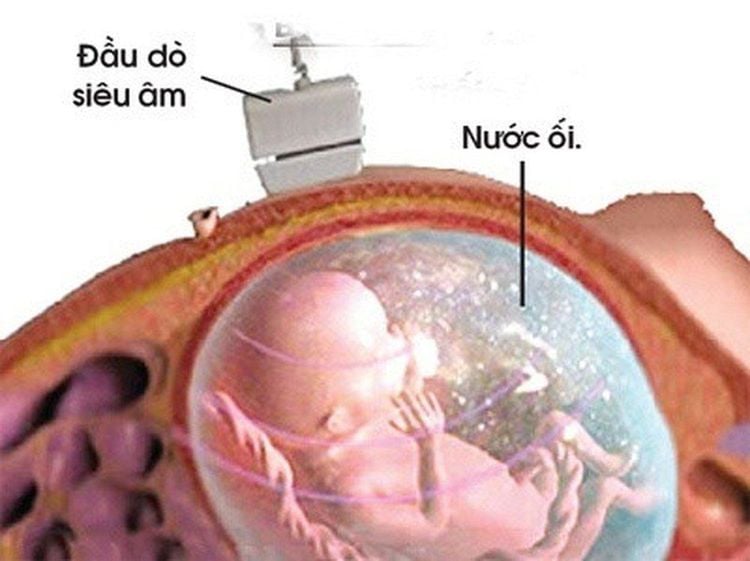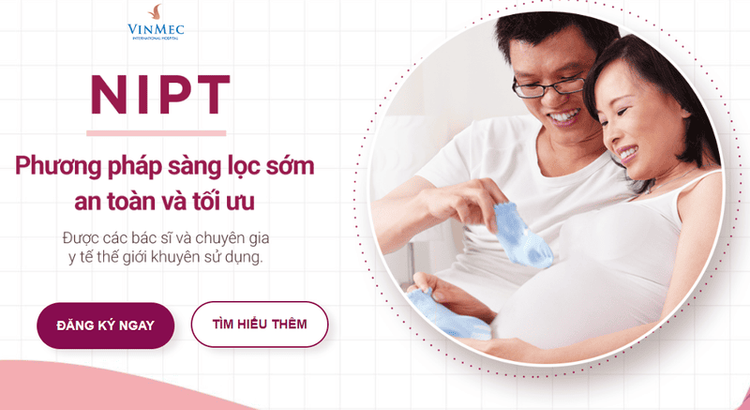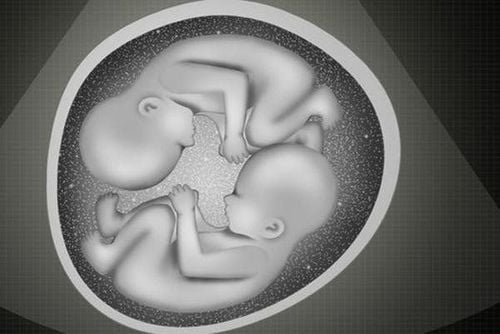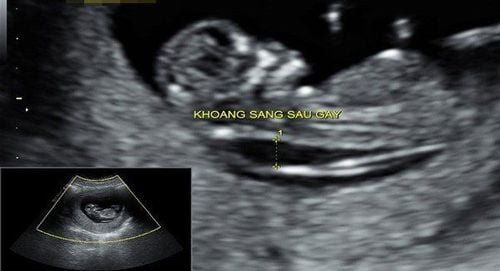This is an automatically translated article.
The article was professionally consulted by Specialist Doctor II Huynh Thi Hien - Obstetrician and Gynecologist - Department of Obstetrics and Gynecology - Vinmec Nha Trang International General Hospital. The doctor has over 32 years of experience specializing in examination and treatment in the field of obstetrics and gynecology - family planning.To detect the risk of fetal malformations early, the doctor may order pregnant women to have an amniocentesis test at the end of pregnancy. So is amniocentesis safe and who should be done?
1. When should amniocentesis be performed?
Not all pregnant women need an amniocentesis test. Amniocentesis, as well as chorionic villus sampling and fetal umbilical cord blood collection, are performed only in certain high-risk women with certain genetic disorders. Some subjects are likely to be indicated for prenatal diagnosis, including amniocentesis:Maternal age over 35. Triple test and combined test indicate high risk. Thick nuchal translucency. Noninvasive screening test (NIPT) results are high-risk. A parent or relative has certain genetic disorders (for example, thalassemia). Women who have given birth to children with certain genetic-related birth defects. Women who have given birth to a child with a chromosomal disorder. Fetal ultrasound detects some malformations, such as: cleft lip, cleft palate, heart defects, organ structural abnormalities, ventricular dilatation... Amniocentesis is not a test to detect all Both disorders are abnormal, but it is a test to diagnose high-risk cases of genetic abnormalities, such as Down syndrome, blood disorders, myasthenia gravis, cystic fibrosis, Tay- syndrome- Sachs and other similar pathologies.
Amniocentesis can be performed in the 2nd stage of pregnancy (16-18 weeks) in cases where it is necessary to determine the maturity of the fetal lungs to provide information for the decision to terminate the pregnancy, from complications such as preeclampsia. Amniocentesis may also be performed to diagnose amniotic fluid infection.
Before performing prenatal diagnostic tests in general as well as amniocentesis in particular, pregnant women should be thoroughly consulted about the benefits as well as the risks that the test causes. So what are the risks of amniocentesis and is it okay for pregnant women to have amniocentesis?
Trắc nghiệm: Mẹ bầu nên làm gì khi bị thiếu ối?
Nước ối đóng vai trò quan trọng trong sự tồn tại và phát triển của thai nhi. Trường hợp lượng ối quá ít (thiểu ối) thì sẽ tiềm ẩn những nguy cơ như gây thiểu sản phổi, chèn ép dây rốn,... Trả lời các câu hỏi trắc nghiệm sau sẽ giúp bạn có những cách phòng ngừa và điều trị kịp thời.The following content is prepared under supervision of Thạc sĩ, Bác sĩ y khoa, Tạ Quốc Bản , Sản phụ khoa , Khoa Sản phụ khoa - Bệnh viện Đa khoa Quốc tế Vinmec Phú Quốc
2. Is amniocentesis safe?
As with other invasive tests, amniocentesis also carries certain risks. On the other hand, whether amniocentesis is safe depends on the medical facility, specialized room, doctor performing and geographical factors from the mother. In fact, amniocentesis carries a risk of miscarriage, but with an incidence of less than 1%, or about 1 in 200 to 1 in 400. However, this rate will be even lower if pregnant women are tested by experienced doctors and medical facilities with full obstetric equipment. In addition, amniocentesis has the potential to lead to other complications, such as damage to the baby or mother, risk of infection, and premature birth.
3. How to reduce the risk from amniocentesis
For peace of mind, pregnant women can talk to their doctor about the risks of amniocentesis, to best prepare psychologically. Besides, the doctor before performing the procedure should also clearly explain the risks of amniocentesis so that the pregnant woman understands what is about to happen. Besides, pregnant women and their families can completely choose a reputable medical facility and experienced doctors to perform this amniocentesis procedure.Before deciding to give a pregnant woman an amniocentesis test, the doctor will ask carefully about the family history and ask about the mother's pregnancy problems. This information will help your doctor understand your risk of a particular chromosomal or genetic disease. From there, the doctor can discuss and help the pregnant woman decide whether to have screening tests, chorionic villus sampling, amniocentesis or even the pregnant woman herself can skip the screening altogether if she wants to.
4. Alternatives to Non-Invasive Prenatal Screening
NIPT is a non-invasive prenatal screening method that helps doctors detect abnormalities in the number and structure of fetal chromosomes during pregnancy. The advantage of the NIPT noninvasive prenatal screening method is that it is non-invasive to the fetus, mainly based on fetal DNA testing from the mother's blood, which can detect fetal malformations from the time the baby is born. 9 weeks old, instead of having to wait until 12 weeks old as before. Furthermore, this method reduces the risk of miscarriage compared to conventional amniocentesis.Vinmec International General Hospital with a team of experienced specialists in maternity, well-trained in the country and in many countries with the world's leading developed medical science such as Germany, UK, France will advise clients on genetic diagnosis before making a decision to do NIPT.

Please dial HOTLINE for more information or register for an appointment HERE. Download MyVinmec app to make appointments faster and to manage your bookings easily.















